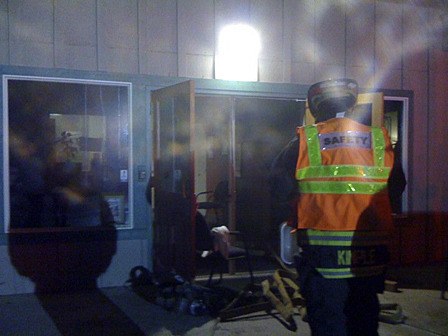The health club patron ended his workout as usual: switch on the sauna and go get ready for a relaxing start to his day.
Only this time, when he walked back into the men’s locker room, the sauna was in flames.
Orcas Island Fire and Rescue responded to the fire at Orcas Spa and Athletics at 6:40 a.m. on Dec. 20. Captain Paramedic Jeff Larsen encountered heavy smoke and running water inside the building. Larsen evacuated the structure and called for the power and water to be shut off. He entered with an additional firefighter and found the fire was put out by a spa member using a fire extinguisher. A melted overhead waterline also contributed to helping extinguish the fire.
“This would have been a major loss for the community, since the large building also included several other businesses,” fire chief Mike Harris said.
The sauna is completely ruined, and there is extensive smoke and water damage. Orcas Spa and Athletics is closed to the public until Dec. 23.
“It’s a huge mess,” said Angela Douglas, who owns the club with her husband Thad. “We don’t know if there is structural damage yet.”
Douglas said the fire was ignited by someone placing the sauna’s wooden water bucket on top of the sauna heater, although the heater was shut off at the time. An athletic club member switched on the sauna and went elsewhere while it warmed. The sauna heater then ignited the wooden bucket. The fire is thought to have spread across the roof of the sauna, breaching the ceiling.
Once the flames breached through the cedar roof of the sauna, the fire ignited the wooden TGI rafters of the ceiling of the first floor and the flooring of the second level. The ceiling area was unprotected by sheet rock, which is used as a fire break.
“Had the fire not been properly extinguished, this open ‘void space’ may have allowed the fire to extend throughout the structure,” Harris said. “Void Space fires are the hardest to control.”
Void spaces are spaces that are not immediately accessible to humans such as attics, crawl spaces, and spaces created by false ceilings.
“These spaces often cause us to guess where the fire may be hiding, and where to effectively cut into the structure,” Larsen said.
The building did not have a sprinkler or automatic fire alarm system.
“Unfortunately these commercial systems were not required during the time of the building’s construction,” said Deputy Fire Marshal Paul Turner.



